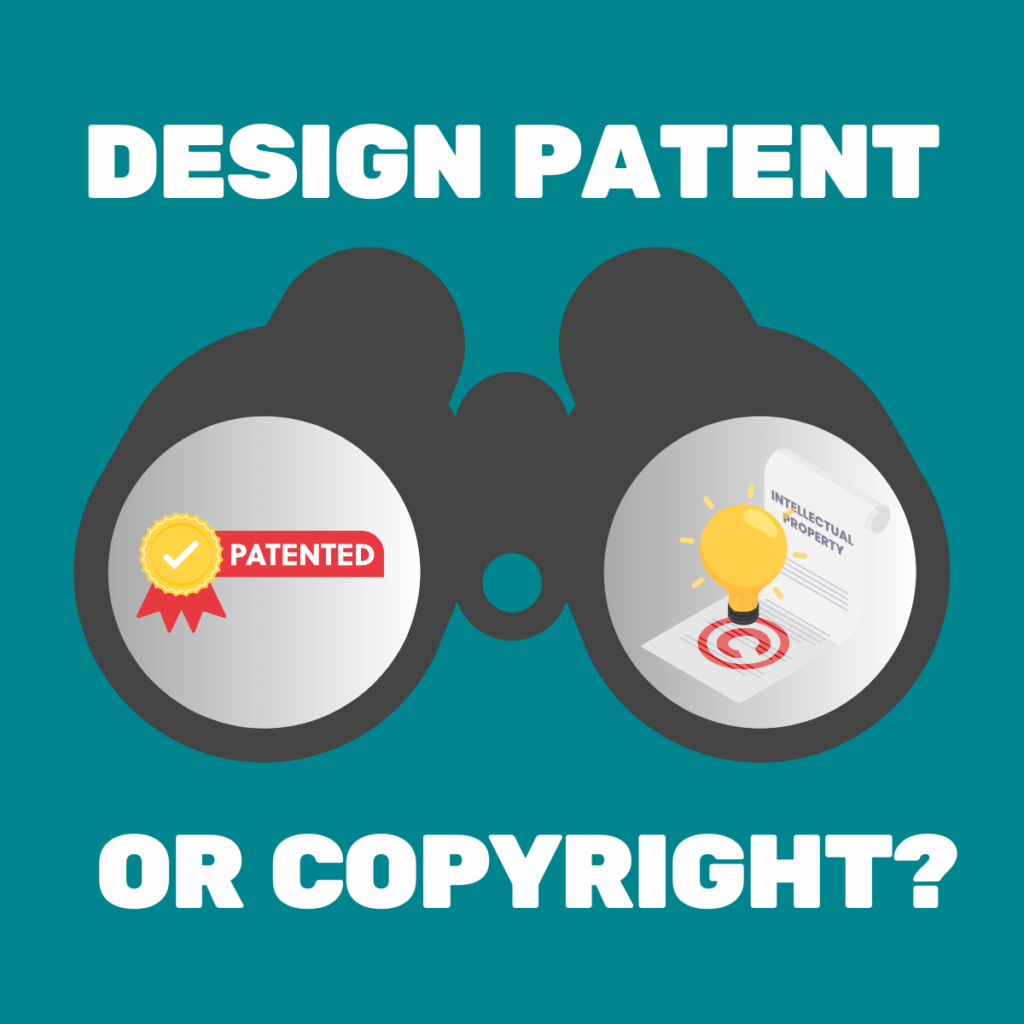Intellectual property laws protect creators of new ideas and works. As an inventor, designer, artist, author or other creator, you may wonder – “Should I get a design patent or copyright?” This is an important decision. Patents and copyrights offer strong protection, but in different ways.
Whether you are launching a product, making art, or designing tech, you need to understand how these types of intellectual property protection differ. This article explains the key points so you can make an informed choice for your needs.

What Design Patents Do
A design patent protects the ornamental look of a manufactured item. It covers the visual appearance, not how it functions. Imagine creating a chair with a unique style. While chairs are common, your design is special. A design patent would stop others from copying that exact look.
If you invent a new, original, decorative design, a design patent prevents copying that particular design. That is, the design patent allows the owner to prevent others from making, using, or selling products having the specific overall appearance shown in drawings with the application. Infringement of a design patent is based on visual similarity between the accused product and the design shown in the drawings of the design patent.
What Copyrights Cover
Copyright law and the U.S. Copyright Office protect many kinds of original works once they are tangible. This includes things like books, movies, music, and architecture. Abstract ideas, procedures, titles, and short phrases are not included.
Pictorial, graphical or sculptural works can get copyright protection. But functional items have special rules. They only get copyright protection if the artistic parts are separable and can stand alone. The copyright covers those unique creative elements.
Copyrights arise automatically – the moment original art is made, it is legally protected. As the copyright holder, you have exclusive rights to reproduce, distribute and display your work. Infringement happens when someone exploits your work without approval, although doctrines like fair use affect this. Formal registration can be filed with the Copyright Office.
Key Differences Between the Two
Some main differences between design patents and copyrights:
Registration – Design patents need an extensive application process with the Patent Office. Copyrights arise on creation and have a simpler registration process.
Limits – Design patents last for a set time and must be filed within a year of first sale or disclosure. Copyrights are ongoing but registration before infringement increases damages.
Process – Securing a design patent often takes over a year. Copyright registration is faster, typically 3-6 months.
Cost – Design patents can be expensive to prepare and file. Copyrights are more affordable for filing and maintenance.
Duration – Design patents last 15 years (or 14 years for older filings) from issue date. No maintenance fees. Copyrights typically last the author’s life plus 70 years after death.
Pros and Cons of Design Patents
Pros:
- Strong protection against others copying ornamental designs
- Clear rules for determining infringement
Cons:
- Can be financially burdensome, especially for individuals or startups
- Registration process is lengthy and requires persistence
- Only protects decorative appearance, not utility or function
Pros and Cons of Copyrights
Pros:
- Automatic protection as soon as work is created, no bureaucracy
- Covers a wide variety of works, flexible protection
- Long duration, life plus 70 years
Cons:
- Doesn’t cover functional aspects, can lead to legal disputes over ownership or infringement
- Can involve tricky infringement cases, especially with utilitarian items, needing careful interpretation
Consult an Experienced IP Attorney
Every creation is unique, with specific protection needs. Speaking with an IP attorney provides tailored advice to keep your intellectual property secure and maintain exclusive rights over your creations. Whether you need help with patents or copyrights, we have the expertise to properly secure your IP.
Don’t leave your work unprotected – contact us for expert guidance on the right legal protections.
About the Author
Matthew McKinney practices in all areas of intellectual property, representing a wide range of clients in connection with the acquisition, transfer, enforcement, and defense of their intellectual property rights.

Share This



